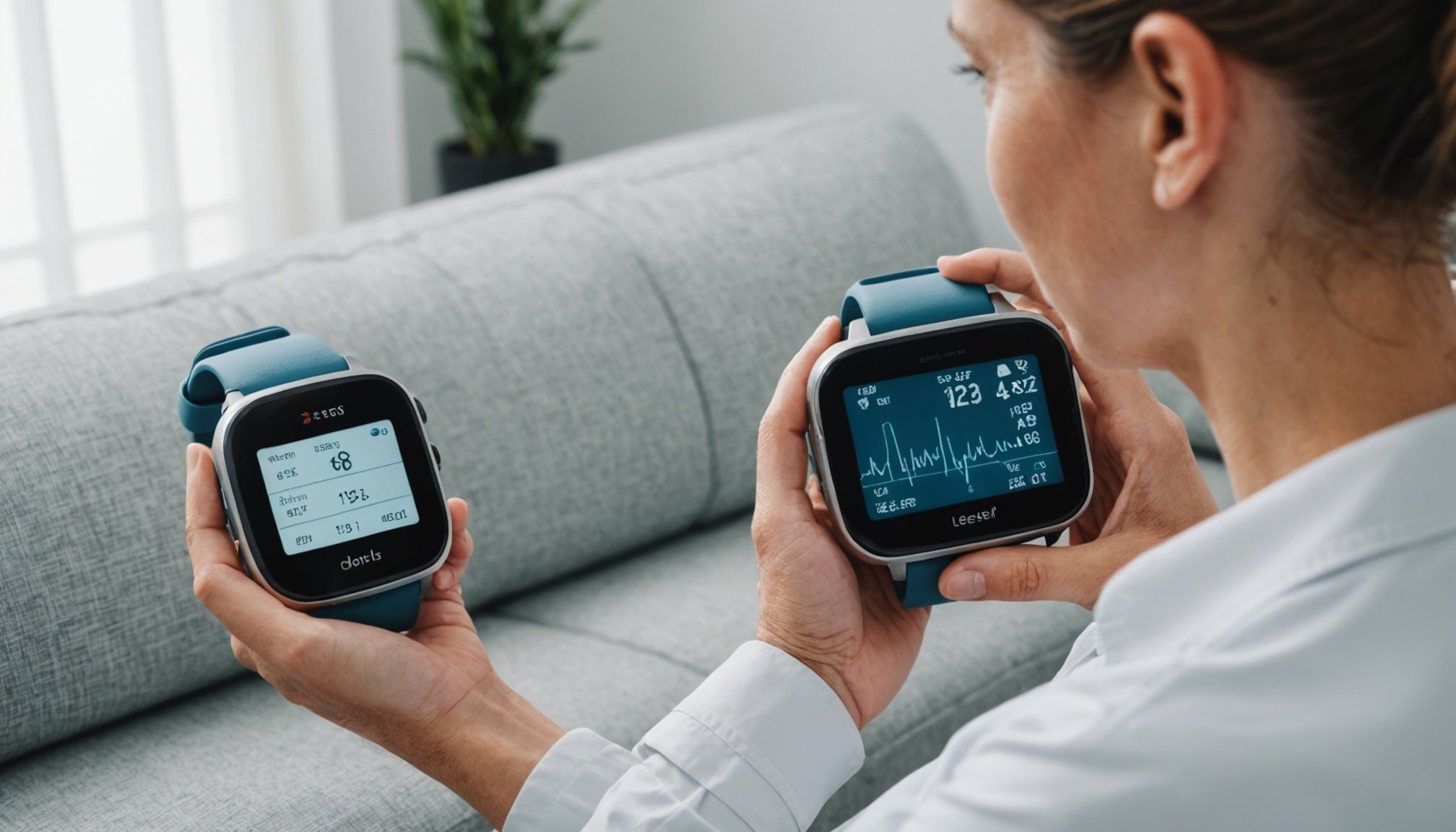Overview of At-Home Fetal Heart Rate Monitoring Technologies
The development of at-home fetal heart rate monitoring has significantly evolved over the years, providing expecting parents with a convenient way to track their baby’s health. Historically, monitoring fetal heart rates could only be done in clinical settings. It involved the use of cardiotocography, a technology that detects changes in fetal heartbeats during pregnancy. This traditional method was essential for monitoring the well-being of the fetus, enabling timely interventions when necessary.
The importance of monitoring fetal heart rates during pregnancy cannot be understated. Regular monitoring helps in identifying any potential health issues early, providing peace of mind to parents. Advances in technology have made this process far more accessible, with at-home fetal heart rate technology now offering user-friendly devices that still provide reliable insights.
Also to discover : Essential techniques for expectant mothers in the uk to successfully track and alleviate stress
In recent years, technological advancements have introduced portable systems featuring digital Doppler technology. These have revolutionised home monitoring by offering enhanced accuracy and real-time data analysis. Furthermore, innovations such as smartphone connectivity have made it simpler for parents to store and share data with healthcare providers. As the field continues to advance, at-home monitoring is becoming a key component in prenatal care, offering both reassurance and effectiveness.
Key Innovations in At-Home Monitoring Devices
At-home fetal heart rate devices have witnessed significant advancements, leading to a myriad of innovative technologies. These innovations not only enhance precision but also increase convenience for expectant parents. With the integration of digital Doppler technology, these devices have become more accurate, enabling precise monitoring in real-time. This point-of-care innovation offers a level of reliability previously available only in clinical environments.
Also to read : Top pregnancy exercises to relieve leg cramps: your ultimate uk guide
The latest fetal heart rate devices incorporate features such as Bluetooth connectivity, enabling seamless data transfer to smartphones or tablets. This allows parents to track and review heart rate patterns through user-friendly apps. Moreover, advanced models feature cloud-based storage, facilitating easy sharing of data with healthcare providers, which ensures continuity of care.
Many devices on the market now emphasize user comfort and ease of use. Some models provide non-invasive methods for monitoring, avoiding the need for conductive gels. These innovative technologies empower parents to be proactive about their unborn child’s health while offering peace of mind.
Furthermore, recent developments in wearable technology are gaining traction. These include sensors embedded in clothing or patches, offering continuous monitoring without disruptive equipment. Future trends predict even greater personalisation and integration with other health tech, positioning at-home fetal monitoring as a keystone in modern prenatal care.
User Experiences and Testimonials
User experiences with at-home fetal monitoring devices are rich and varied, providing valuable insights into their practicality and usability. Many users praise these devices for offering reassurance and convenience. For instance, expectant parents often appreciate being able to monitor their baby’s heart rate at any time without having to visit a clinic. The sense of empowerment from understanding their baby’s well-being is a significant benefit frequently mentioned in testimonials.
Case studies highlight both positive and negative outcomes. On the positive side, users report that some devices have helped them detect irregularities early, enabling timely medical consultations. Conversely, some users face challenges with devices, such as inconsistent readings or technical difficulties. These issues sometimes lead to anxiety, underscoring the importance of selecting reliable technology.
Community reviews play a critical role in decision-making. Engaging with other users’ experiences through forums or social media can provide useful tips and reassurance. Users often find solace in shared experiences, which can guide them in choosing devices that best fit their needs.
Overall, understanding user experiences is paramount. While many find at-home monitoring beneficial, assessing suitability through reviews creates a more informed purchase decision.
Efficacy and Reliability of At-Home Devices
Understanding the efficacy of fetal monitoring devices is crucial for expecting parents considering at-home alternatives. These devices offer a convenient solution but vary in reliability. Recent statistical analysis reveals that many at-home devices approach the accuracy levels seen in clinical settings, although discrepancies can occur. The precision of these devices often hinges on factors such as positioning, device quality, and user proficiency.
Some devices utilise advanced algorithms to enhance the reliability of at-home devices, but user experience remains a pivotal factor. Misinterpretation or improper use can skew results, emphasizing the need for clear user manuals and training resources. Experts advise that regular calibration and adherence to guidelines are essential to maintain reliability in readings.
Expert opinions on device efficacy are mixed, with some professionals praising the technology for its accessibility and others expressing caution about potential misinterpretation of data by untrained users. Nonetheless, most agree that at-home devices serve as a valuable complement to professional care. They enable more frequent monitoring, which can be beneficial between clinical appointments.
Ultimately, the combination of technological precision and user competence is key to maximising the efficacy and reliability of at-home fetal monitoring systems. As technology advances, ongoing evaluation will be critical to ensure these systems meet high standards of care.
Regulatory Aspects and Market Trends in the UK
Within the UK, regulations concerning at-home fetal monitoring ensure devices meet stringent safety and efficacy standards. These regulations, overseen by agencies such as the Medicines and Healthcare products Regulatory Agency (MHRA), are designed to protect consumers, ensuring products are safe and reliable. Compliance with these regulations is mandatory, and companies must demonstrate the efficacy and safety of their fetal monitoring devices through rigorous testing procedures.
When it comes to market trends, the UK has seen substantial growth in the adoption of at-home fetal heart rate monitors. Technological advancements, such as improved sensor technologies and smartphone integration, have made these devices more appealing and accessible. Furthermore, regulations play a significant role in shaping the availability of these products. Devices that meet regulatory standards are more likely to be trusted by consumers, influencing their purchase decisions.
As the industry evolves, market trends indicate a growing demand for user-friendly interfaces and enhanced connectivity features. Consumers are increasingly seeking devices with additional functionalities, such as cloud-based data storage and analysis. The UK market for at-home fetal monitoring technologies looks promising, with expectations of continued innovation and increased adoption due to these advancements.
Health Implications and Considerations
At-home fetal heart rate monitoring offers significant health benefits but also necessitates careful consideration. Regular monitoring can provide reassurance by enabling parents to observe their baby’s development and detect any irregularities early. However, it is essential to follow thorough fetal monitoring guidelines to ensure accurate and beneficial use.
Potential health benefits include:
- Early detection of potential issues, allowing timely medical intervention.
- Empowering parents with increased involvement in prenatal care.
Yet, some risks and considerations must be noted. Overzealous monitoring without medical guidance might lead to unnecessary anxiety. Additionally, reliance solely on at-home devices could inadvertently delay professional consultation, potentially posing health risks to both parent and child.
For expecting parents, adhering to guidelines for effective and safe usage is crucial:
- Ensure devices are used as per manufacturer instructions.
- Combine at-home monitoring with regular clinical appointments.
- Discuss any irregular findings with a healthcare provider promptly.
While at-home fetal heart rate monitoring has transformative potential, it should not replace professional medical advice. Informed usage, alongside professional support, can make these technologies a valuable component of prenatal care, enhancing both monitoring and peace of mind.

